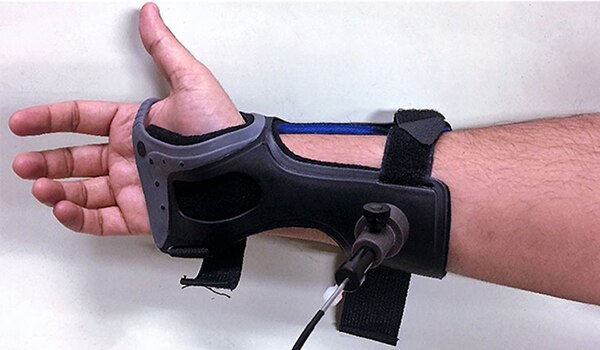New Technologies in Diabetes Care and Management

Learn about NIH-funded technology breakthroughs advancing the science of diabetes.
Three NIH-funded research groups are developing innovative technologies that may change the way health care professionals understand, diagnose, and treat type 1 and type 2 diabetes. Learn more about these tools and advances below.
A tool to advance type 1 diabetes research
NIDDK-funded researchers are developing a new tool, called an islet chip, to study islets—groups of cells in the pancreas. Islets contain several types of cells, including beta cells that make insulin. In people with type 1 diabetes, the body’s immune system attacks and destroys the beta cells.
Islet chips are bioengineered three-dimensional models that imitate the way the human body supports islets to allow human islets to survive and function in the lab. Islet chips will allow researchers to study how the immune cells interact with beta cells to mimic aspects of the autoimmune process involved in type 1 diabetes.
“[Islet chips] will also serve as a platform for testing novel type 1 diabetes therapies, potentially saving time and money in terms of identifying the most promising therapies to test in people,” said NIDDK Director Dr. Griffin P. Rodgers, in 2019 testimony before the U.S. Senate’s Special Committee on Aging.
This research is part of the NIDDK’s Human Islet Research Network, which is conducting multiple avenues of research to better understand how beta cells that make insulin are lost in type 1 diabetes and to identify strategies to protect or replace them in people.
For more information about this project and other NIDDK-funded research on type 1 diabetes, read Redefining Reality: How the Special Diabetes Program is Changing the Lives of Americans with Type 1 Diabetes.
Replacing needles with lasers to monitor blood glucose
Researchers funded by the National Institute of Biomedical Imaging and Bioengineering (NIBIB) have developed a noninvasive device that can measure blood glucose levels without the standard finger prick.
Most people living with diabetes need to prick themselves several times a day to obtain a small blood sample to measure blood glucose levels with a glucometer. Monitoring blood glucose in this way is painful and inconvenient.
The noninvasive device, developed by researchers at the Massachusetts Institute of Technology and their collaborators at the University of Missouri School of Medicine, shines a laser onto a person’s skin and uses spectroscopy—a technique that measures different aspects of matter by observing how it reacts with light—to measure blood glucose levels. More research and development are needed to improve the device and make it more portable and convenient to use.
“With the rapid increase of diabetes in the population, the need for an accurate and noninvasive glucose monitoring system is becoming critical,” said Behrouz Shabestari, PhD, director of the NIBIB program in Optical Imaging and Spectroscopy.
For more information about the research, read the NIBIB science highlight.
A wearable ultrasound patch to measure blood pressure
NIBIB-funded researchers have also developed a flexible, wearable patch that can measure blood pressure and detect cardiovascular problems. This device could eventually help people living with diabetes, who are more likely to have high blood pressure and cardiovascular problems than people without diabetes.
The wearable patch emits ultrasound waves to monitor blood pressure by recording the diameter of a pulsating blood vessel. Software translates the measurements into information that can be used to detect high blood pressure, heart disease, and heart valve problems.
“I am optimistic that someday this device will be empowering to patients and improve public health care, but there are still barriers to get this to the bedside,” said Sheng Xu, PhD, the study’s senior investigator from the University of California San Diego. Currently, external wires are needed to connect the patch to a power source and data processing units, but researchers are working to make the patch wireless.


Comments